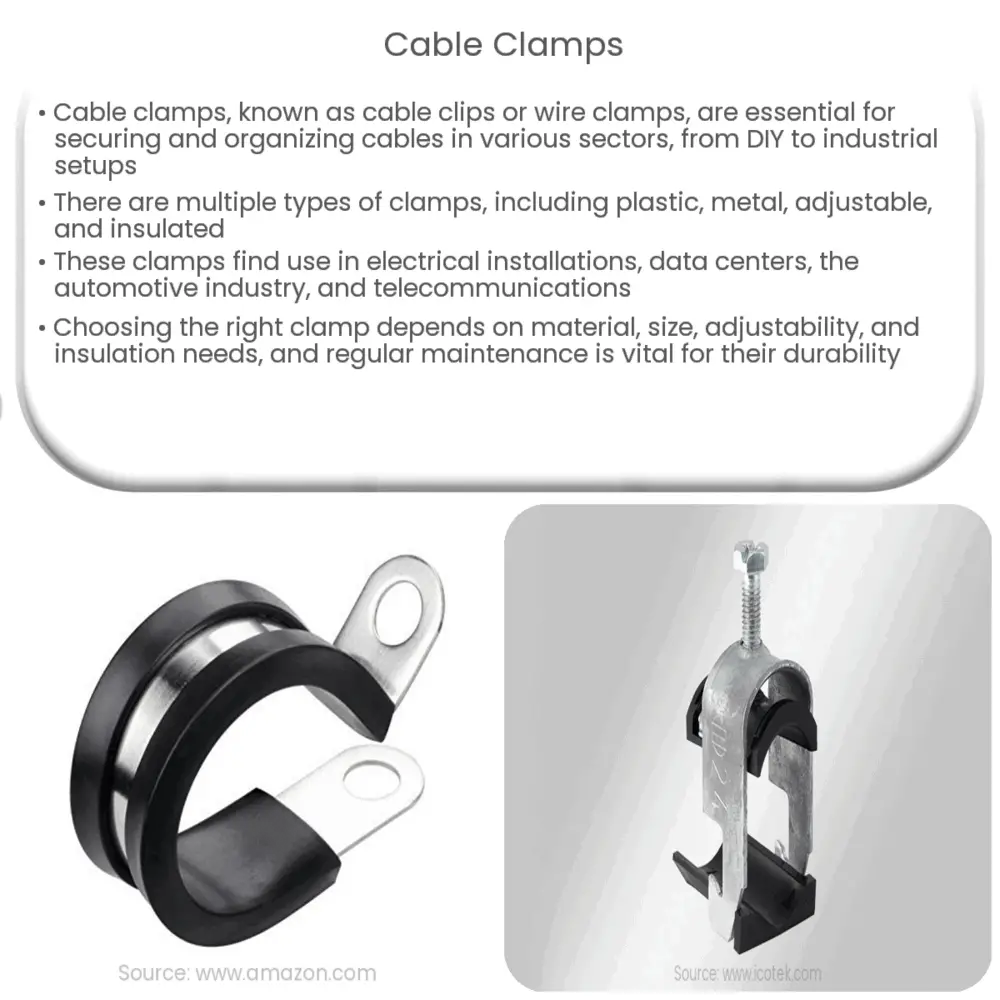Explore the various types, uses, and maintenance tips for cable clamps, and learn how to choose the right one for your needs.

An Introduction to Cable Clamps
Cable clamps, also known as cable clips or wire clamps, are indispensable elements in various sectors, from home DIY projects to large-scale industrial installations. They are specifically designed to secure, manage, and organize cables, providing a clean and efficient setup, whether in electrical systems, telecommunications, or data management scenarios.
Types of Cable Clamps
- Plastic cable clamps: Plastic cable clamps are lightweight, economical, and come in various shapes and sizes. These clamps often feature a simple snap-in design for quick and easy installation. They are ideal for lighter cables and wires, such as those used in residential and light commercial environments.
- Metal cable clamps: Constructed from various metals like stainless steel, aluminum, or brass, these clamps are much more robust and durable than their plastic counterparts. Metal cable clamps are suitable for heavy-duty applications, including industrial and outdoor installations where they must withstand harsh conditions.
- Adjustable cable clamps: This type provides flexibility in accommodating various cable sizes. The adjustable nature of these clamps makes them ideal for situations where cable diameters may change over time, such as in growing data centers or dynamic industrial environments.
- Insulated cable clamps: These clamps feature an extra layer of protection against electrical conductivity, heat, and corrosion. Insulated clamps are particularly beneficial in environments where safety is a high priority.
Uses and Applications of Cable Clamps
Given their versatility, cable clamps have found widespread use in a broad spectrum of fields. Here are some key applications:
- Electrical Installations: They are used to secure electrical wires and cables, ensuring safe and efficient power transmission.
- Data Centers: Clamps are crucial in organizing the multitude of cables in data centers, improving airflow, reducing downtime, and facilitating easier maintenance.
- Automotive Industry: In vehicles, cable clamps keep the numerous wires and cables organized, preventing damage due to vibrations or heat.
- Telecommunications: Clamps are used to secure and organize network cables, aiding in maintaining the integrity of data transmission.
In the next section, we will delve into the various factors to consider when choosing the right cable clamp for your needs.
Choosing the Right Cable Clamp
There are several factors to consider when selecting the ideal cable clamp for your needs:
- Material: The choice of material largely depends on the environment where the clamps will be used. For instance, if the clamps will be exposed to harsh conditions such as outdoor weather or high temperatures, metal clamps would be a more suitable choice.
- Size: The size of the clamp should match the size of the cable. A clamp that’s too small may damage the cable, while one that’s too large may not hold the cable securely.
- Adjustability: Adjustable clamps are beneficial in situations where the cable diameters may change, allowing for greater flexibility.
- Insulation: If the clamps will be used in environments where electrical conductivity could be a concern, insulated clamps would be a safer choice.
Maintaining Cable Clamps
Proper maintenance of cable clamps is also important to ensure their longevity and effectiveness. Regular inspection for any signs of wear and tear, corrosion, or damage is key. In addition, when working in high-temperature environments, checking for any signs of thermal degradation is necessary.
Conclusion
In conclusion, cable clamps are versatile tools essential in a multitude of sectors. Their crucial role in managing and securing cables makes them a staple in electrical installations, data centers, automotive industry, and telecommunications among others. Choosing the right clamp depends on factors like material, size, adjustability, and insulation, making it crucial to consider these aspects to ensure the efficiency and safety of your installations. Lastly, regular maintenance of these clamps is vital for their continued effectiveness and longevity. Whether you’re a hobbyist working on a DIY project or a professional managing a large-scale installation, understanding the importance and applications of cable clamps is key to successful and efficient cable management.

